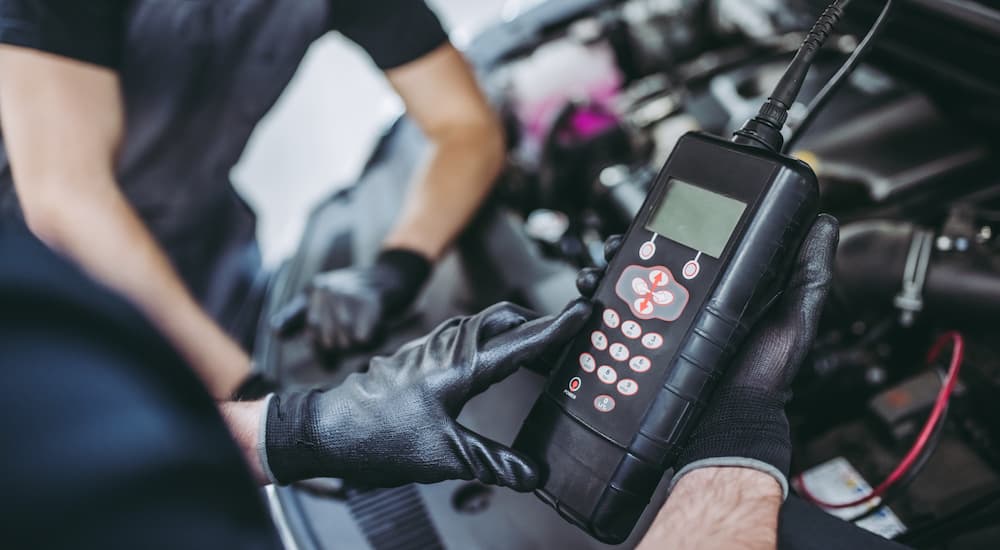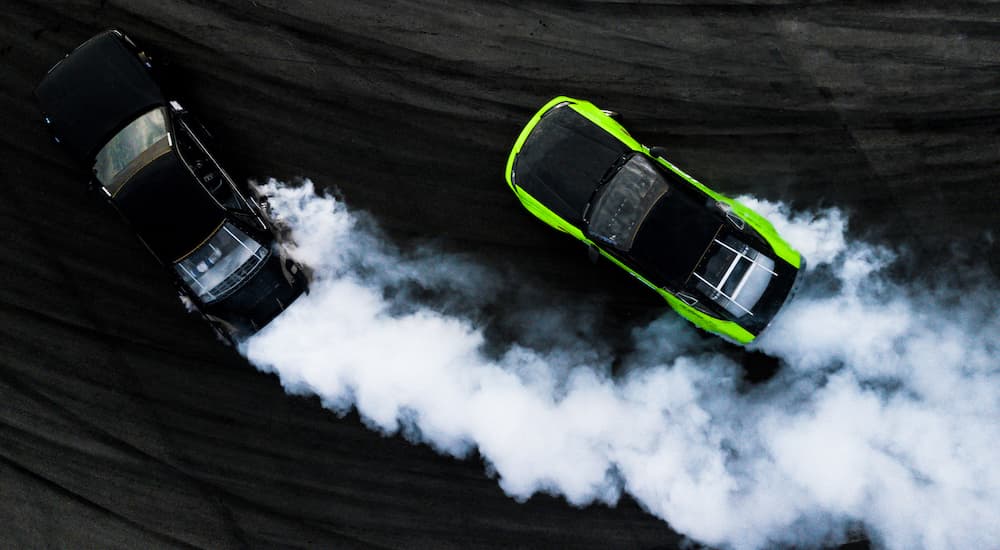This is a warning. It is not a condemnation of or a call to boycott, but a message intended to caution those who might be customers in the automotive tuning industry. It is an attempt to communicate that you may be getting yourself into a relationship whose outcomes are far from guaranteed.
The warning is this: Be willing to tolerate the loss of your car, or your money, or to endure an interminable lead time before you commit to business with Hennessey Performance Engineering.
Hennessey is a name that may have escaped your notice if your interest in cars is new or mostly unexplored. However, most “car people” have heard the name and associate it with some of the most powerful modification packages and some of the fastest cars on Earth. This is because HPE has delivered thousands of upgraded vehicles, with John Hennessey starting the business after a highly successful venture modifying his own Mitsubishi 3000 GT. HPE designed and built what was the fastest road car on Earth and is now delivering a vehicle that could become one of two, maybe three, road cars to achieve 300 mph to date. They are exceptionally good at what they do, which is to make fast cars go faster, whether they be supercars, muscle cars, or pickup trucks.
However, the equation is sadly more complicated than “Money + Car + Hennessey = Happy Customer.” This is where the warning comes in. Evidence from several stories across the last six years, combined with my own experience living through similar plotlines in another industry, makes me confident that I understand the fundamentals of what’s going on in Sealy, TX. If you’re interested in modifying your vehicle through Hennessey, which you absolutely should be, you should enter the experience with your eyes wide open.
Checkered Flags and a Checkered Past
The controversies swirling around Hennessey, most thoroughly and testily documented in a series of articles published by Jalopnik over the course of several years, vary in severity and scope. Let us first consider the facts of each:
One – The Tuner School Rip-Off
This story–the oldest of the three–is a “he-said-she-said” between a dissatisfied student and John Hennessey himself regarding the value provided by the in-house Tuner School. In a nutshell, the student lambasted the program on Reddit for being overcrowded, understaffed, poorly supplied, and disappointingly short on track time and actual tuning education. When Jalopnik reached out to HPE, John Hennessey replied with reasonable counterpoints:
The project cars see a lot of hands without a lot of experience, so inevitable overhandling and human error leads to broken parts and inoperable cars.
“There are no guarantees of any specific amount of track time,” he said and pointed out that the course is designed for beginners.
Pro-rated refunds are available to students who would rather back out, and Hennessey said he spoke with the poster explaining this.
Hennessey also told Jalopnik that the student admitted he was “drunk, and having a bad day” at the time of making the post. However, the student told Jalopnik, “I can 110% assure you I WAS NOT drunk when I made the post and I wasn’t having a bad day. I don’t know how that statement came about, I never mentioned that to anybody, but it is completely false.”
Two – Undelivered Promises and Disenchanted Workers
Ahmad Ali was not the only foreign customer to report that they never received the car that they paid for, and at least in Ali’s case, didn’t get their money back either. Of the $75,000 that he paid for a Hennessey C7 Corvette, all he got back was $4,972.
Former employees, all speaking under the condition of anonymity, reported numerous deceptive practices which contributed to situations like Ali’s. It was apparently standard practice to:
- Use a foreign client’s money to fund other projects
- Allow cars to sit for months at a time, feigning progress by removing the drivetrain
- Use off-the-shelf parts passed off as Hennessey-designed parts
- Only complete projects for VIPs, Hennessey’s friends, and local clients who visited the workshop.
Former CEO Dan Goldman was an inspiration for these employees before his departure in 2016. He was described as “someone who cared,” so dedicated to turning things around that he “would sometimes pay for parts out of his own pocket to get a client’s car completed.”
However, one former employee advocated for his old boss. Vinny Russo told Jalopnik that John was a “stand-up guy” and “wouldn’t be around doing this for 25 years if he was doing business that badly.” Mr. Russo also blamed Goldman for the financial issues facing the company.
Three – Dubious Claims
Back in 2017, Hennessey told Top Gear: “Tyres are a limiting factor for Bugatti, but I don’t believe they’re a limiting factor for us. When we do our math, we know that we are not overloading them. We’re not even close to the load specification of the tires at our speeds.”
There’s a counterpoint to this–Michelin Pilot Sport Cup 2 tires were simply not designed for 300 mph. While Michelin did not specify an upper speed limit outright, they implied their skepticism; their messaging to Jalopnik on their approach to top speed runs is clear:
“With top speed initiatives such as this, tires are always an additional challenge to be fully analyzed. When Michelin is asked to participate, we work together with the manufacturer to guarantee the integrity of the tire at those very high speeds. Prior to any speed run, we validate the tires through analytical analysis as well as machine testing using the exact conditions the tires will encounter. We take into account vehicle weight, horsepower, camber & toe, aero loads at speed, road surface, and more. Validating the tires are capable of reaching those speeds is critical.”
At the time of the claim, HPE had not entered any discussions with Michelin about validating tires for 300 mph.
As academics explained to Jalopnik, a tire’s limiting factor at such speeds is heat, not the car’s mass. Stiffer tires would perform better by improving the ability to withstand the influence of heat. Importantly, heat in the tire increases with the cube of speed. This means getting from 261 to 300 mph correlates to a 52% increase in heat generation. Stock Cup 2 tires, which were specifically designed for the Bugatti Chiron’s electronically-limited 261 mph top speed, are unlikely to withstand this much heat.
The SSC Tuatara’s 331 mph run in late 2020 was reportedly executed on off-the-shelf Cup 2 tires. But the legitimacy of the claim has been strongly refuted; SSC has since settled for a verified 283 mph top speed, a far cry from even 300 mph. And though the Chiron has finally eclipsed the 300-mph mark, it did so on a heavily modified version of the Cup 2 using carbon fiber on the carcass to increase stiffness.
Gaslighting: A Case Study
Frustrated students. Disgruntled employees and a long history of effectively stealing from customers. Unnecessarily bold and verifiably untrue claims. The most famous performance tuning shop in the world.
Look, these stories are a long way behind us, mostly dating from 2016 to 2018. If you believe in mankind’s capacity for change, you must consider that Hennessey’s prominent controversies are older than yesterday’s news. But I, for one, have seen this sort of thing before–from the inside–and after living through it, I now strongly subscribe to the saying that “where there’s smoke, there’s fire.”
One – Liar, Liar, Pants on Fire
Let’s start with the disgruntled student. The most significant takeaway from this story is that Hennessey said the student admitted to posting his rant in a drunken haze; the student completely denied this. One of them is lying.
I’ve seen the personality before; the passionate innovator who is in their current position as a business president more by natural hierarchy than by their merit as a businessperson. They were so confident in their technical abilities that they believed the narrative in their minds on every subject, even when it was demonstrably false.
An example? In my own career, I once introduced a new material to a process I was responsible for, effectively adding a new flavor to our menu. This personality once told me to my face that we had processed this new flavor quite easily when the process was under their stewardship, that everything was fine until I took over. I say to you once again that the process had been in my hands for six months before adding this new material to the lineup.
Two – Everybody Drinks the Kool-Aid
Now, on to the endless promises–or lies–to customers and the abuse of honest workers. John Hennessey has admitted to mistakes such as over-promising and over-loading his business to the point that nothing could be delivered. He’s a phenomenal performance tuner, but he isn’t a trained or natural businessman. Unfortunately, people aren’t good at firing themselves and can easily fall into the trap of thinking that the best steward for their business will always be themselves.
I’ve seen first-hand what happens when a bad businessperson gets in over their head, and it isn’t pretty. The customer gets strung along and may never get their product. The employees themselves are unable to execute their mission and instead get burned fighting fires of the head honcho’s own creation. Overall, the system breaks down and fails to work if the wrong people keep “drinking the Kool-Aid” and the right changes don’t get made.
First, let’s examine what happens to the customers. Ahmad Ali was promised a 2014 C7 Corvette, then told supply issues meant he’d have to wait for a 2015. Then there were delays with that. Then he requested a refund so he could source the car himself–a refund which he had not received as of four years later, despite numerous promises from HPE of an imminent refund. HPE simply lacked the capacity or the capital to fulfill its promises, and lower priority clients got burned.
In my own career, I witnessed many products reach production status before the company I worked for had established any capability to build them. Virtually no R&D took place to establish process control, yet huge product builds were attempted, each one crashing and burning over and over again until customers finally moved on. This, despite assurances all along that we could do what they were asking for.
Then there are the people on the inside. So many anonymous sources fearing retribution who said all they wanted to do was make fast cars go faster. Faced with a reality in which they had to lie to customers about their cars and shuffle parts around to keep the right people happy because the company was stretched so thin, they broke down and left.
In my own experience, the goal–the promise–of the company I worked for was to build advanced processes from the ground up, based on science and systematic engineering. We had barely gotten started when that mission pivoted to “do whatever needs to be done to complete whichever job is top priority today.” The promise was shattered by over-commitment to deliver products that we hadn’t learned how to build with machines that we hadn’t learned how to manage. I just wanted to direct experiments and systematically establish processes; instead, we worked relentlessly to keep the target off our backs, and someone was always failing.
Three – “Our math”
This finally brings us to disprovable claims about pedigree and capability. While I can’t speak to the internal consequences at HPE for making questionable claims about tires, my personal work experience featured a dubious claim too; one that, when doubled down upon, was a catastrophic mistake.
John Hennessey’s claim about “our math” immediately brought to mind the time the company I worked for installed a brand-new facilities system. Before the first test run of the system was complete, the old system was removed, forcing the new system into service. The test run was interrupted, with predictably unsatisfactory results, but the truth was far scarier. It was clear within weeks that the system was severely undersized for the demand, but we doubled down on insisting that the problem was the demand and not the system itself. “Our math” said it was so. The outcome was years of bottlenecked capabilities and endless emergencies until the system was finally augmented with additional and larger machines.
The Venom F5 has been out for a bit now, and the 300 mph claims were made nearly five years ago, but it still hasn’t actually done it–officially, when it comes to stock Cup 2 tires, nobody has. Yet the targeted top speed remains 311 mph. To me, it’s a sign of what kind of business leader is at the helm here; an insight regarding what to expect when you order from Hennessey Performance Engineering.
The Significance of Success
There is one key difference between my personal work experience and the Hennessey story: genuine results. I mean, look, the man made a name for himself by setting records in a 3000 GT; by now, the accumulated achievements completely justify Hennessey’s position as a titan in the performance industry. Over 12,000 modified vehicles delivered in the last 30 years, at a pace now around 500 cars per year, is further proof that HPE does an excellent job–if the cars weren’t amazing, the business simply wouldn’t grow.
But they have grown, and they continue to forge ahead. They graduated from making the fastest Vipers in the world (breaking the 200-mph mark in 1997) to the Venom GT, a Lotus Elise-based car that epitomized Hennessey’s mission. With output exceeding 1200 hp and a power to weight ratio of roughly 1 hp to 1 kg, this car accelerates from 0-300 km/h in 13.63 seconds (a world record), to 200 mph in 14.51 seconds (another world record), and to a verified 270.49 mph top speed. For a year or two in the mid-2010s, the fastest road car on Earth was a Hennessey.
The dream of claiming speed benchmarks is still alive in the Venom F5, which cruised to 250 mph in a test run while only using 50% of its full engine output of 1817 hp. Whatever oddities exist in the claims of 2017-2018, the real deal is coming to fruition now, and I’m excited to see if it achieves the target of 311 mph to challenge Bugatti, Koenigsegg, and SSC for the top speed crown.
Don’t let that fool you into thinking Hennessey is just another unattainable hypercar name. The bulk of HPE’s work is transforming muscle cars and good ol’ American trucks into absolute monsters. Consider among their many brilliant endeavors:
- The 600-hp VelociRaptor Ford F-150 Raptor mod, introduced in 2012 to start the truck-modding side of the business
- 6×6 mods for both Ford and Chevy pickup truck platforms to challenge the Mercedes-AMG G 63 6×6
- 1000 hp mods for eight models from all of the major American brands
The proof is in the pudding, and the technical capabilities are clear. No achievement that Hennessey is working towards should be dismissed out of hand, and as one of a handful of tuning shops to provide a factory-quality warranty, you can be confident that your Hennessey-tuned car is a world-class badass whether the parts inside came off the shelf or not.
I Just Don’t Like the Taste
John Hennessey deserves the name he’s made for himself. He earned every bit of recognition he received for his modified Mitsubishi 3000 GT, for his benchmark-setting Vipers, and especially for the Venom GT. Offering a performance tuning school for beginners is an awesome concept for building up young talent, and the pedigree of what’s already been achieved speaks volumes of what the tuner shop in Sealy, Texas, is capable of. Shoot, if I had the cash, I’d love to see what they could do with my underpowered Lexus. There is no reason to doubt the evidence which says that Hennessey might be the best in the world at making fast cars (and trucks) go faster.
But there are serious warning signs in the recent past that warrant consideration. A student with little to gain says he was sober when verbally shredding the Tuner School program; the business owner with plenty to lose says the student admitted to being drunk. Stories from multiple anonymous sources describe practices of duping and entrapping customers or refunds held up because of an “issue on the client’s end.” A claim that “our math is better,” which was easily debunked when challenged, begging the question, “Why?”
If you look at these events in isolation, they are easy to rationalize. But I’ve been in the situation where I spent hours poring over records just to find out which of us was the crazy one. I’ve seen the personality that believes their math is better, seen them double down when they were obviously wrong, and swam in an environment so toxic that the employees were burned as badly as the customers. In short, I’ve heard this story before.
If you’re secure enough in your finances that you can accept losing the money–or the car–that you send to Hennessey, go for it! Disregard this opinion and order a hilariously overpowered muscle car or pickup truck from Hennessey today. But if lighting $75,000 on fire and getting nothing for it–like what happened to Ahmad Ali–sounds like a nightmare, maybe it’ll help you to know what’s in the Kool-Aid before you fill your cup. Ali didn’t; neither did I. In both cases, the hangover has lasted for years.







